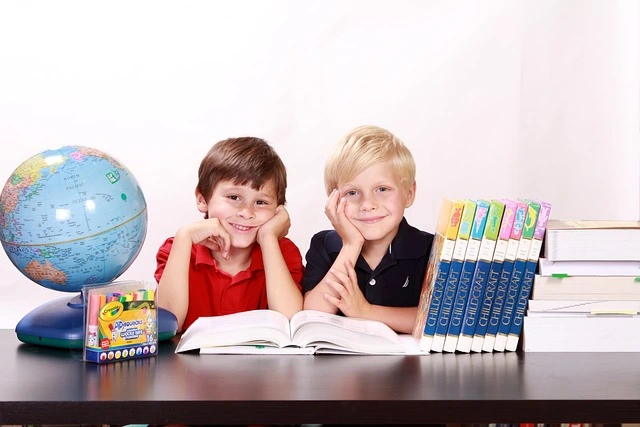How to Make Riddles with Answers for Kids: Online, Hard, and Funny
Questions resemble little riddles that challenge the mind and flash imagination. They are tomfoolery and assist messes with considering new ideas, assemble critical thinking abilities, and further develop their language capacities. Assuming you’re hoping to make questions for youngsters that are sufficiently hard to make them think yet in addition adequately amusing to make them laugh, you’re perfectly located! In this article, we’ll investigate the moves toward making online conundrums with testing and engaging responses. We should make a plunge!
Outline: How to Make Riddles with Answers for Kids Online Hard and Funny
Introduction
Importance of Riddles for Kids
Purpose of Creating Riddles Online
Understanding What Makes a Riddle Effective
Elements of a Good Riddle
Difference Between Easy and Hard Riddles
Types of Riddles for Kids
Classic Riddles
Funny Riddles
Logic Puzzles
Wordplay Riddles
Tips for Creating Hard Riddles for Kids
Use Clever Wordplay
Incorporate Multiple Meanings
Use Simple Language with Complex Ideas
Tips for Making Funny Riddles for Kids
Incorporate Humor and Puns
Use Silly Scenarios
Keep the Tone Light and Playful
Balancing Difficulty and Fun
Keeping Riddles Engaging
Avoiding Frustration with a Mix of Riddles
Tools and Resources for Creating Online Riddles
Online Riddle Generators
Using Creative Writing Tools
Platforms for Sharing Riddles
Examples of Hard and Funny Riddles for Kids
Five Hard Riddles with Answers
Five Funny Riddles with Answers
How to Present Riddles Online
Designing Kid-Friendly Content
Using Graphics and Visuals
SEO Tips for Publishing Riddles Online
Choosing the Right Keywords
Optimizing Content for Search Engines
Leveraging Social Media to Reach More Kids
Engaging Kids with Interactive Riddles
Using Videos and Animations
Creating Riddle Games and Quizzes
Conclusion
Benefits of Riddles for Kids
Encouraging Creativity and Fun
Introduction
Conundrums have been around for quite a long time, charming youthful, and old with their sharp exciting bends in the road. For youngsters, they offer a great method for learning new words, thinking basically, and bonding with loved ones over cheerful puzzles. However, how might you make hard riddles that are adequately hard to challenge a youngster’s mind while at this point being adequately engaging to keep them charmed? This article will guide you through the techniques for making ideal hard riddles for young people that can be shared on the web.
Understanding What Makes a Riddle Effective
Elements of a Good Riddle
A good riddle is like a small mystery wrapped in a few lines of text. It should be intriguing, provide clues, and have a satisfying answer that makes sense once revealed. The key elements of a good riddle are:
Clarity: The riddle should be clear and concise.
Cleverness: A great riddle often involves clever wordplay or double meanings.
Challenge: It should require some thought but not be impossible to solve.
Humor: For kids, adding humor can make riddles more enjoyable.
Difference Between Easy and Hard Riddles
Simple riddles normally have clear responses and utilize basic language. Hard puzzles, then again, challenge the peruser with additional intricate thoughts, pleasantry, and misdirecting signs. They frequently require a more profound degree of reasoning and at times numerous endeavors to tackle.
Types of Riddles for Kids
Classic Riddles
These are traditional riddles that often rely on familiar concepts or simple logic. They are great for warming up young minds.
Funny Riddles
Entertaining enigmas consolidate humor, quips, or senseless circumstances. They probably won’t be excessively difficult, however, they are ensured to bring a grin.
Logic Puzzles
These riddles require logical thinking and often involve sequences, numbers, or patterns. They are perfect for older kids who love a challenge.
Wordplay Riddles
These puzzles use wit, homophones, or twofold implications to deceive the peruser. They are great for further developing jargon and language abilities.
Tips for Creating Hard Riddles for Kids
Use Clever Wordplay
One of the most incredible ways of making a puzzle hard is by utilizing sharp pleasantry. Play with homophones (words that sound something very similar yet have various implications) or homographs (words that are spelled something very similar yet have various implications).
Incorporate Multiple Meanings
Make sure your riddle can be interpreted in more than one way. This ambiguity forces kids to think carefully about what the riddle is asking.
Use Simple Language with Complex Ideas
Kids understand simple words better, so keep your language straightforward. However, the idea or the concept behind the riddle can be complex to solve.
Tips for Making Funny Riddles for Kids
Incorporate Humor and Puns
Use playful language and puns to add humor to your riddles. Words that have dual meanings or sound like something else can create funny scenarios.
Use Silly Scenarios
Think of the kinds of things that make kids laugh – like animals doing human activities, or objects having unexpected conversations.
Keep the Tone Light and Playful
Avoid making the riddle too serious or dark. Remember, the goal is to entertain while challenging the mind.
Balancing Difficulty and Fun
Keeping Riddles Engaging
A riddle should be engaging enough to capture the child’s interest. Mix up hard riddles with some funny ones to maintain balance and keep kids entertained.
Avoiding Frustration with a Mix of Riddles
Furnish a blend of questions with shifting trouble levels. This guarantees that children don’t get disappointed with excessively hard enigmas and stay inspired to address them.
Tools and Resources for Creating Online Riddles
Online Riddle Generators
Several online tools and apps can help you create riddles. These can be a great starting point to generate ideas and tweak them for your audience.
Using Creative Writing Tools
Writing tools like Thesaurus and Grammarly can help you come up with synonyms and polish the wording of your riddles to make them more engaging.
Platforms for Sharing Riddles
Share your riddles on platforms like blogs, social media, or websites specifically designed for kids’ content. This will help you reach a broader audience.
Examples of Hard and Funny Riddles for Kids
Five Hard Riddles with Answers
I speak without a mouth and hear without ears. I have nobody, but I come alive with the wind. What am I?
Answer: An Echo
I am taken from a mine, and shut in a wooden case, from which I am never released, and yet I am used by almost every person. What am I?
Answer: Pencil Lead
I have keys but open no locks. I have space but no room. You can enter, but you can’t go inside. What am I?
Answer: A Keyboard
The more of this there is, the less you see. What is it?
Answer: Darkness
What has cities, but no houses; forests, but no trees; and rivers, but no water?
Answer: A Map
Five Funny Riddles with Answers
Why did the math book look sad?
Answer: Because it had too many problems!
What has one head, one foot, and four legs?
Answer: A Bed
Why can’t a nose be 12 inches long?
Answer: Because then it would be afoot!
What goes up but never comes down?
Answer: Your Age
Why do ducks have feathers?
Answer: To cover their butt quacks!
How to Present Riddles Online
Designing Kid-Friendly Content
Utilize splendid tones, fun text styles, and drawing in visuals. Kids are attracted to outwardly engaging substances, so ensure your questions stick out.
Using Graphics and Visuals
Adding images or simple animations can make riddles more engaging. Visual aids help in understanding complex riddles and make the experience more interactive.



